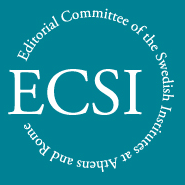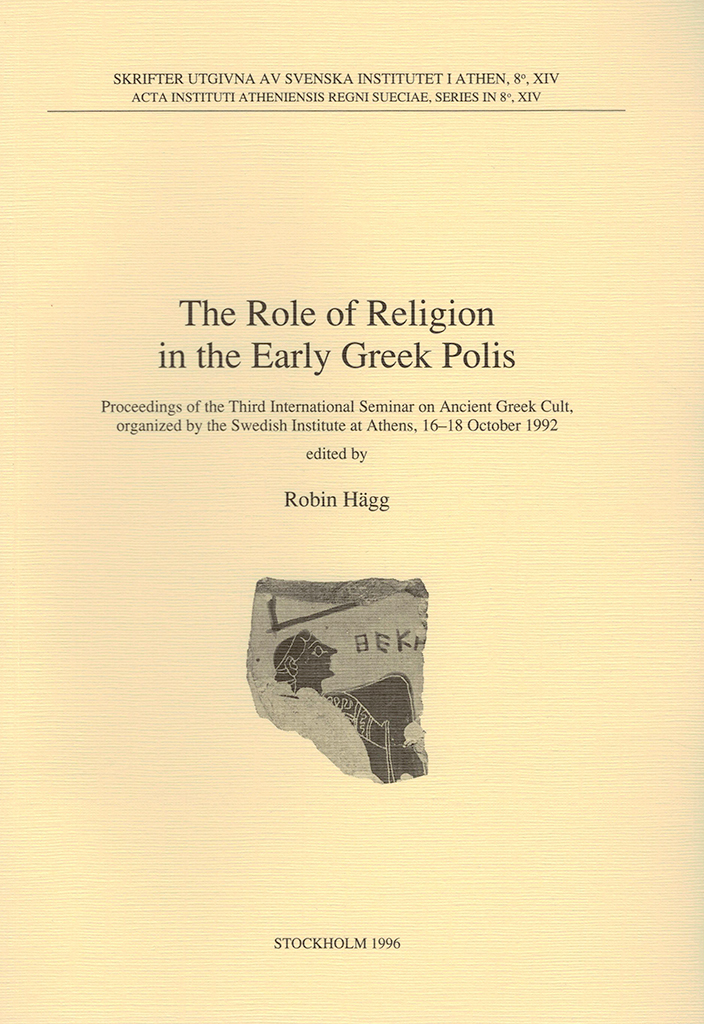Published by the Swedish Institute at Athens. Distributed by Astrom Editions. The role of religion in the early Greek polis. Proceedings of the Third International Seminar on Ancient Greek Cult, organized by the Swedish Institute at Athens, 16–18 October 1992 Edited by Robin Hägg Abstract These twelve papers read at an international seminar in Athens deal with various aspects of the role of religion in the early Greek polis, based on the epigraphical, iconographical and archaeological evidence. Among the special topics discussed are territorial myths and the mythical articulations with regard to the early polis, the Greek temple-builders, the distribution of offerings and rituals between graves and sanctuaries, the development of sacred and profane civic ideology in Athens, processions (pompai), verbal and ritual obscenity in women’s cults, prohibitionary inscriptions, the role of the seer, the Thesmophorion in central Athens, the cults in Solonian Athens, cults by the seashore and Dionysos at Argos. Contents Preface (p. 7) Irad Malkin, ‘The polis between myths of land and territory’, pp. 9–19. Walter Burkert, ‘Greek temple builders: who, where and why?’, pp. 21–29. François de Polignac, ‘Entre les dieux et les morts. Statut individual et rites collectifs dans la cite archaïque’, pp. 31–40. Sanne…
Published by the Swedish Institute at Athens. Distributed by Astrom Editions. The Greek Renaissance of the eight century B.C. Tradition and innovation. Proceedings of the Second International Symposium at the Swedish Institute at Athens Edited by Robin Hägg Abstract ”The Greek Renaissance” designates the formative period of the Greek society of historical times during the latter half of the eight century B.C. The 24 papers originally read at a symposium deal with various aspects of this period; they are followed by transcripts of the discussions of the symposium. The contributors are specialists in ancient history, archaeology, philology, epigraphy, art history and history of religion. Among the topics dealt with are historical reasons for the rediscovery of the Mycenaean past in the age of Homer, the regional pottery styles, burial customs and attitudes to death, Oriental traits in epic poetry, the origin and early spread of the alphabet, Late Geometric art, especially vase painting, early Greek religion, especially cult images and altars, the growth of the pan-Hellenic santuaries, diviners and magicians, the working of bronze and ironin sanctuaries, obeloi as pre-monetary currency, the size and growth of populations, Homeric medicine, cult of the ancestors, the symposion as social organization, the customs…

